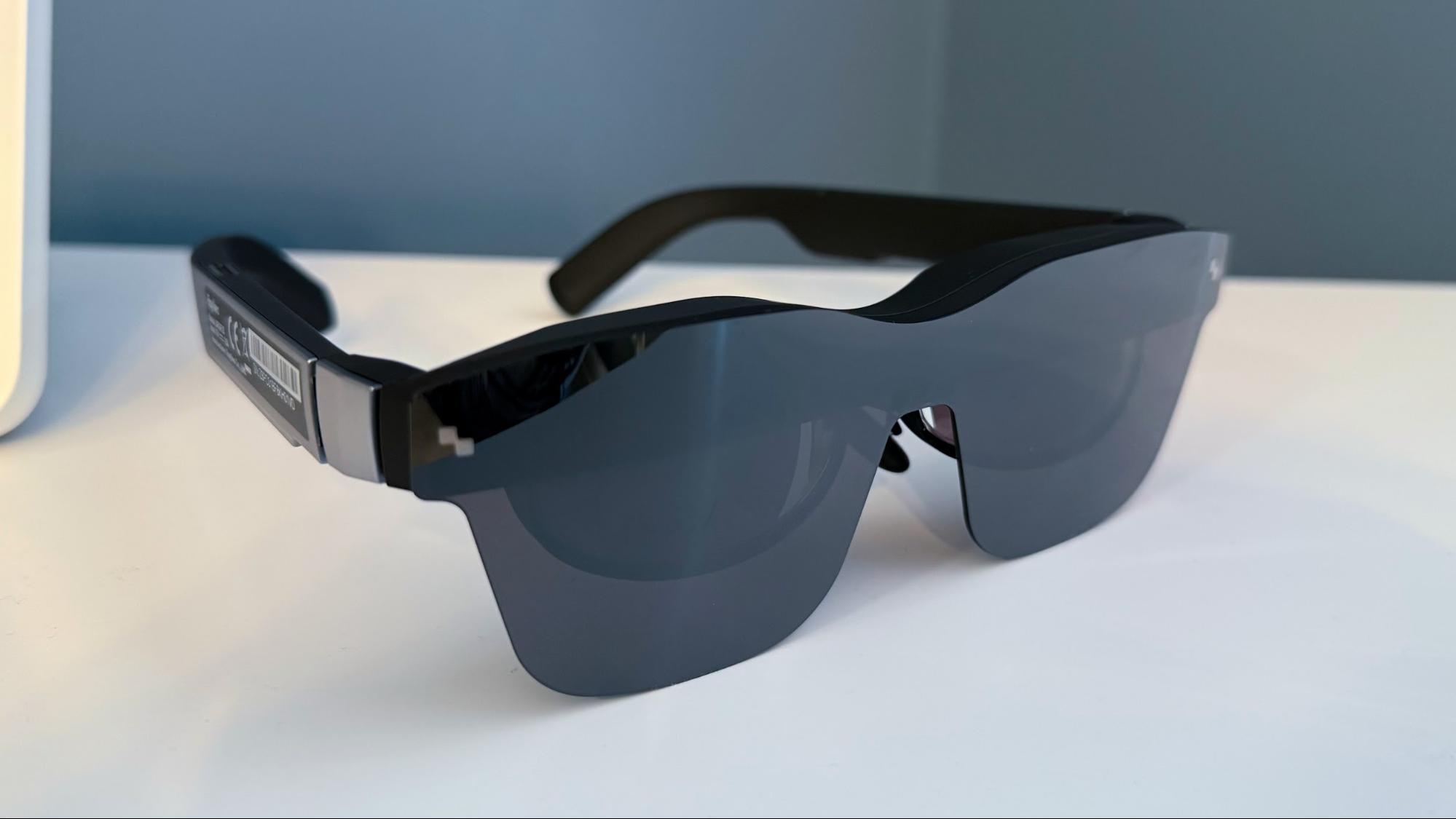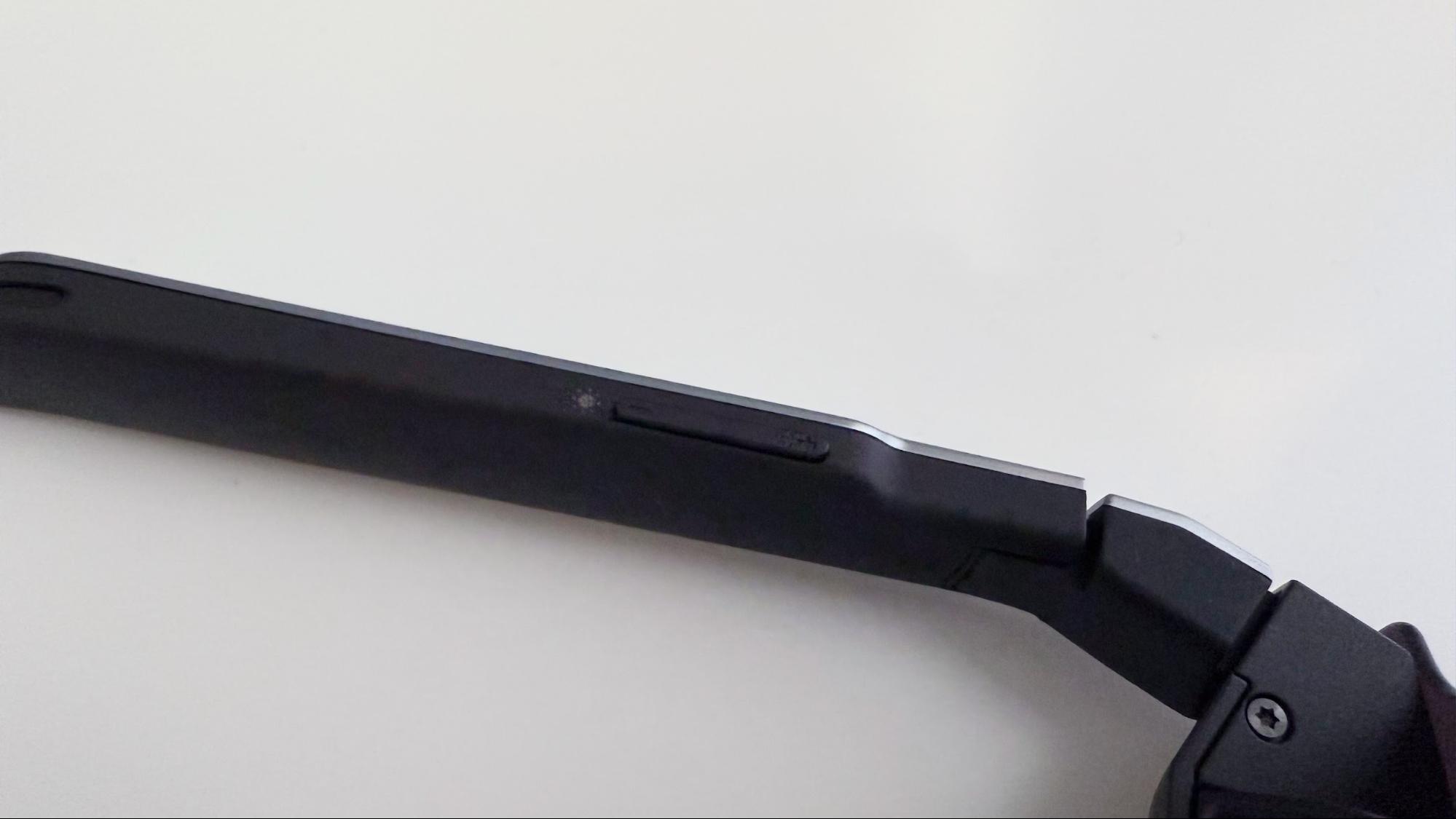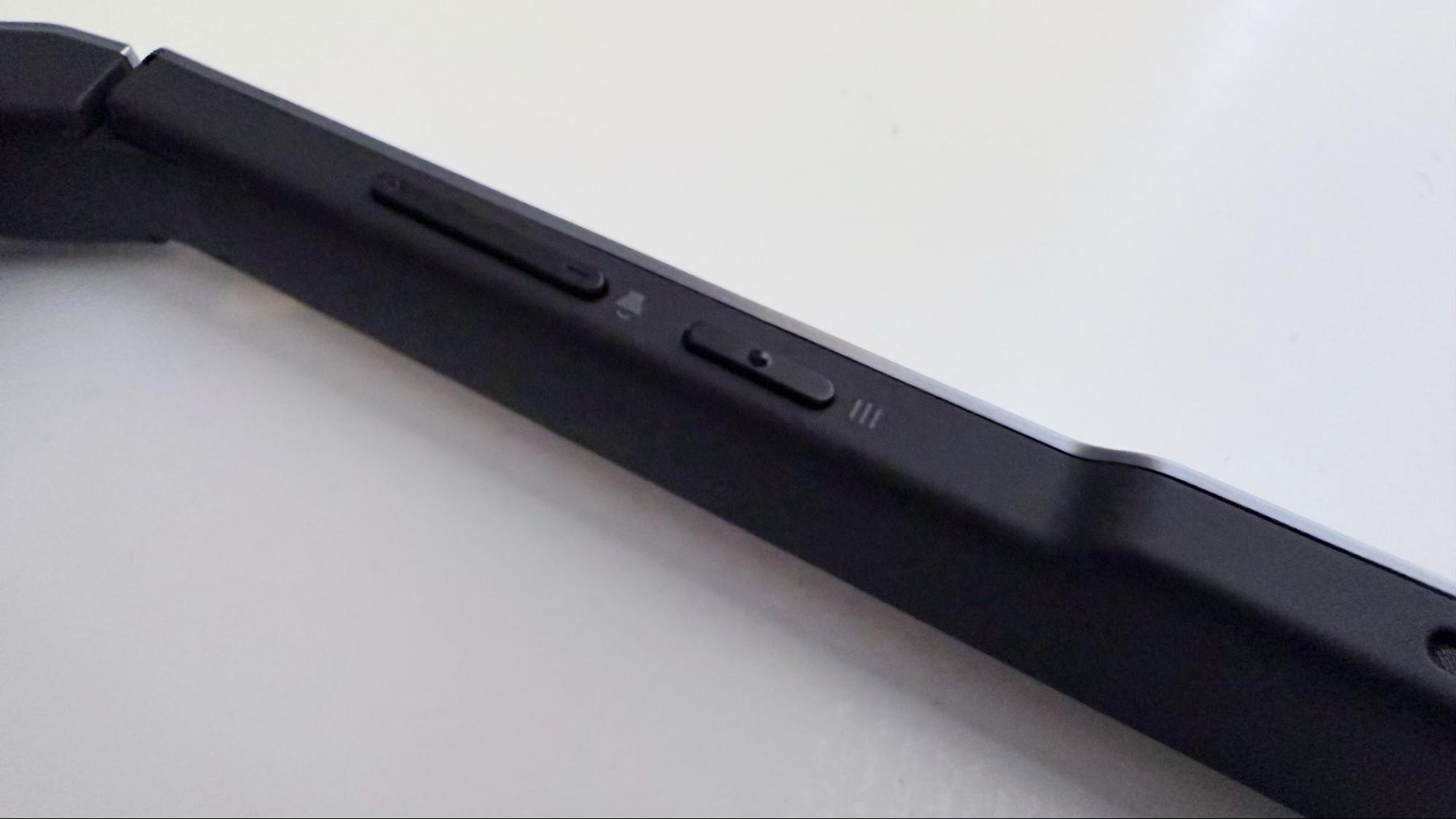For people looking to expand their viewable footprint when consuming content, augmented reality glasses are a relatively low-impact option for consumers. With a form factor that resembles a pair of oversized sunglasses, AR glasses can easily slip into a backpack and don’t make you look like a total knob to passersby.
RayNeo, a subsidiary of TCL, is expanding its reach in this segment with the Air 2s glasses. If you recall, I reviewed the RayNeo Air 2 in late 2023, so read on to see what’s changed with this newest release.
Design of the RayNeo Air 2s
The design of the Air 2s is not too far removed from the preceding Air 2. They resemble a pair of stylish sunglasses, but they have some key differences. All the primary hardware for the Air 2s resides in the large module at the top of the frame. You’ll find most of the electronics here, including the dual 120 Hz Sony Micro OLED displays. The side arms are also much thicker than you’d find on a traditional pair of sunglasses, and for good reason.
The arms house four speakers (two on each arm) and are adjustable. The arms feature a three-position adjustment (there’s a default position and one click up or down, which angles the arms 5 degrees in either direction).
A single rocker switch on the bottom of the right arm adjusts brightness. A matching rocker switch resides on the bottom of the left arm, which adjusts the volume of the integrated speakers. Finally, a single menu button on the left arm allows you to control a limited number of settings (pressing the volume rocker moves up and down within the on-screen display). A USB-C port is located at the end of the right arm, and you can connect to your smartphone, laptop, or gaming console with the included USB-C to USB-C cable.
Given its price point, the Air 2s isn’t quite as feature-packed as some of the competition, like the Xreal One or even the Xreal Air 2. The front visor is a single piece of shaded plastic. RayNeo doesn’t include black plastic light blockers to reduce ambient light, and there is no fancy electrochromic dimming feature.
The whole thing is made of plastic, and the arms feel hollow and pretty cheap. The silver finish on the outside of the arms looks nice, but RayNeo makes a critical aesthetic faux pas here. The FCC label for the Air 2s is visible when wearing the glasses. And it’s an ugly sticker displaying a barcode, the serial number, and the model number for the Air 2s. It also has an icon of a garbage can with an X through it, signifying that you shouldn’t just toss the Air 2s in the trash and instead recycle it. Well, the exterior label is trash – stick it inside the arm where it’s out of sight like other manufacturers.
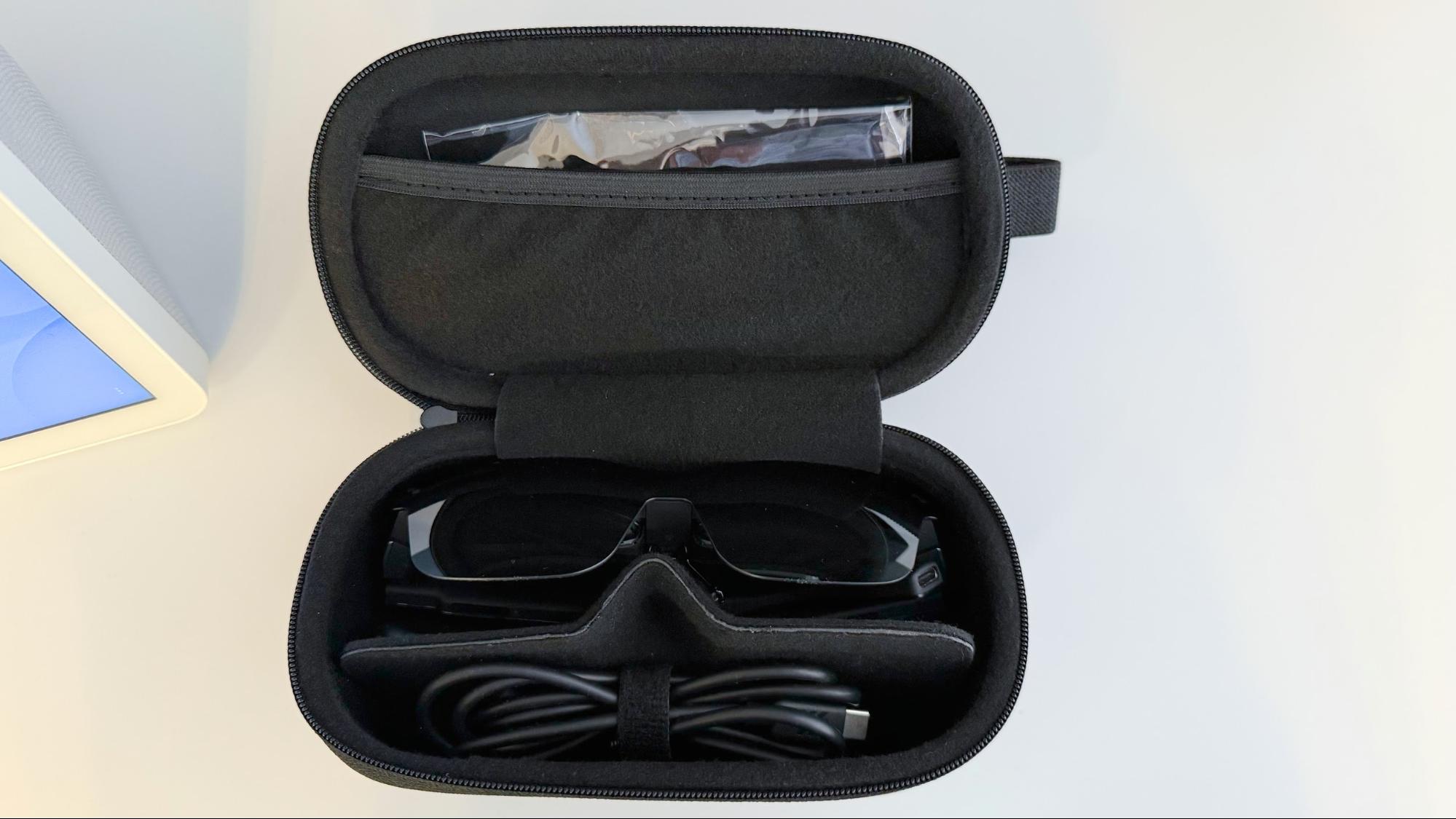
The box has two nose pads, one of which is already installed. RayNeo also includes a demo frame for prescription lenses, a carrying case, and a cleaning cloth. The hard carrying case is a nice addition (it wasn’t included with the preceding Air 2s) and provides enough room for the glasses, the USB-C cable, and the cleaning cloth.
Specifications for the RayNeo Air 2s
| Display | 1920 x 1080 per eye |
| Display Type | OLED |
| Brightness | 600 nits |
| Field of View | 46 degrees |
| Degrees of Freedom | 3 DoF |
| Audio | Dual open-air speakers |
| Connectivity | USB-C |
| Weight | 2.8 ounces (79 grams) |
Using the RayNeo Air 2s
Like all the recent AR glasses that have hit the market, the Air 2s connects via USB-C. This connection gives it nearly universal compatibility with a wide range of computing devices, from late-model iPhones to Android smartphones to tablets to PCs to Macs.
I was able to successfully connect to a MacBook Pro (M3 Pro), Mac Mini (M4), iPhone 16 Pro, iPad Pro (M4), and a Lenovo ThinkPad X1 2-in-1 convertible. It was a simple plug-and-play affair with each device.
When I plugged the Air 2s into the Macs or ThinkPad X1, the glasses sprung to life within a few seconds, displaying my desktop in front of my eyes with little drama. The Air 2s supports up to a 120 Hz refresh rate, which I confirmed within the Display settings dialogs for Windows 11 and macOS Sequoia 15.2.
According to RayNeo, the Air 2s projects a screen 201 inches across at a virtual distance of six meters away with a 46-degree field of view (FoV). The picture was incredibly crisp at the center of the viewing area and got slightly blurry towards the left and right edges.
I’ll note that this blurriness is likely exacerbated by the fact that unlike the pricier Xreal One I recently reviewed, the Air 2s doesn’t have physical or software controls to adjust the pupillary distance to ensure optimum clarity and eye comfort.
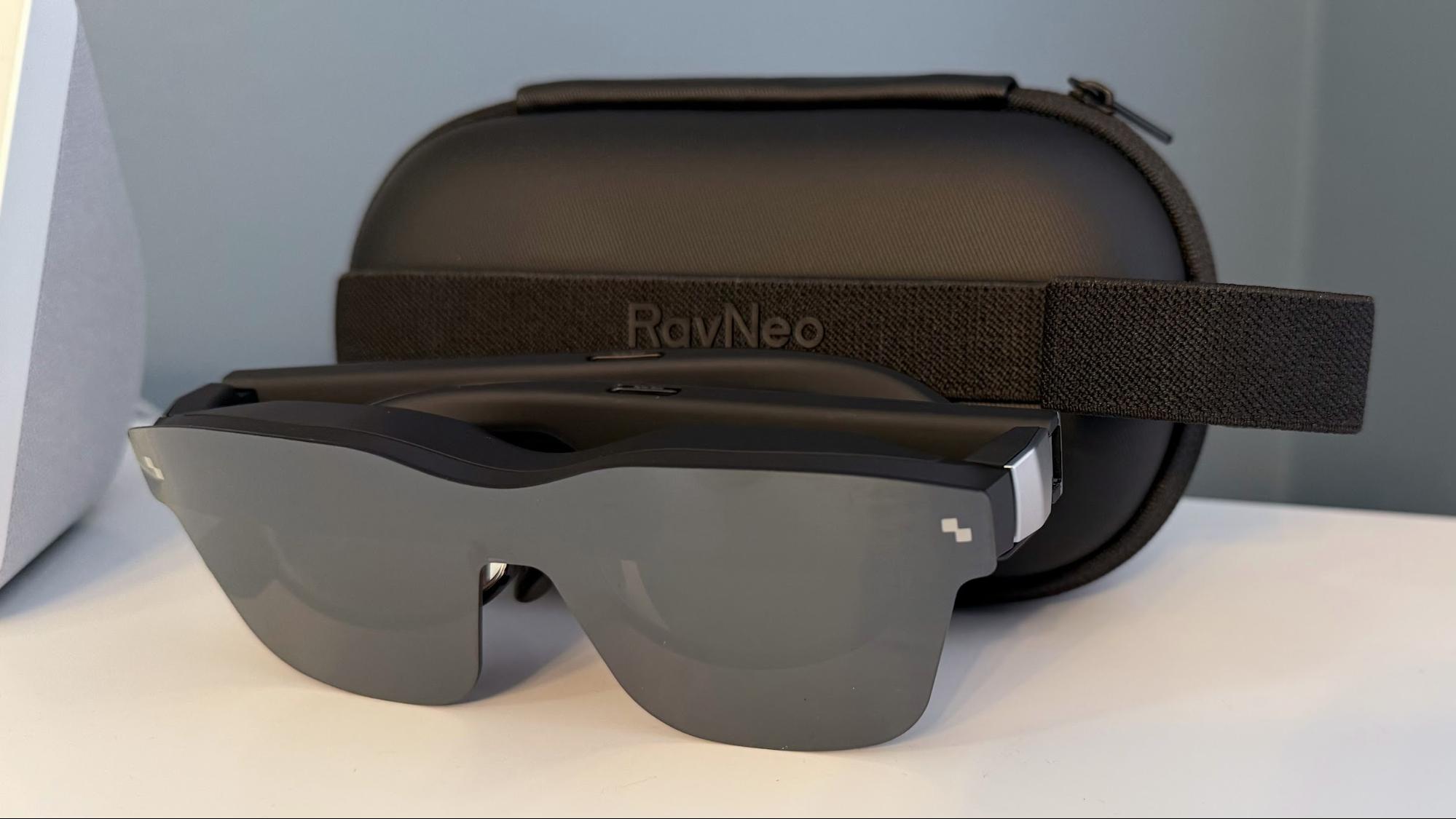
I used the glasses for various tasks, from typing a portion of this document in Microsoft Word on the MacBook Pro to playing a few games on the Mac Mini. I also did some light photo editing on the ThinkPad X1 in GIMP. I was fully capable of typing and navigating through Windows and macOS with the glasses while wearing the Air 2s and using a mouse and keyboard for navigation. However, after using the glasses for about two hours straight, my eyes started fatiguing while looking at text. I’d suggest taking regular breaks to avoid such issues.
However, I had a much more pleasant experience watching media on Macs, PCs, and iPhones. When watching movies and TV shows, I had no qualms about picture quality or image sharpness. I spent several hours watching multiple episodes of Marvel’s What If without any eye fatigue or strain.
While I had no issues with the images displayed on the twin Micro-OLED displays, I couldn’t say the same for the newly upgraded audio system. Just like the previous Air 2, the speakers on the Air 2s were lackluster. Although the Air 2s doubles up on the speakers (it now features four), I had the same issues with bass, distortion, and mid-range performance. There was also an annoying issue of the frames of the glasses rattling/buzzing when the volume was at 25% or higher. It’s highly distracting when trying to enjoy music or even people talking while watching a movie. To avoid the issue altogether, I simply plugged in my AirPods Pro to handle my audio needs while wearing the Air 2s.
Bottom Line
The RayNeo Air 2s is a bit of a mixed bag in the world of AR glasses. The hardware isn’t as advanced and the build quality isn’t as good as something like the Xreal One. Granted, the newly launched Xreal One has an MSRP of $499 versus $399 for the Air 2s. But even the $399 Xreal Air 2 Pro offers a better experience and hardware all around (including electrochromic dimming).
However, the Air 2s’s trump card is street price. The glasses are currently on sale at Amazon for $319, and a $30 instant coupon reduces the price to just $289. That’s a compelling bargain for AR glasses. You’ll just have to remember that you don’t get any light blockers for the lenses in the box, and the speakers are rubbish. However, given that most of us have at least one pair of Bluetooth earbuds lying around, the audio issues can be quickly negated.






